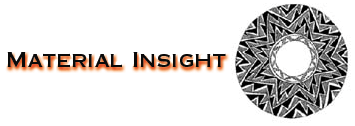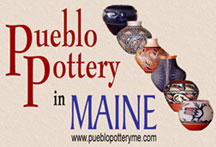|
We are
proud to offer several hundred short but |
Links: A Perspective of Navajo History and Weaving Navajo ethnological and textile background outline and photos The Museum of New Mexico Older than the state of New Mexico itself, the Museum of New Mexico houses the country's most intriguing collection of art, history and culture in four museums and five monuments statewide. Come discover the true heart and soul of the Southwest. A Perspective of Navajo History and Weaving This page is from 1997 and includes views that are in common with my research. I believe that the "Classic" period is not well represented in terms of the "facts" we have. Depending who you read you will get different facts. There is no provenance that is associated with any "Classic" blanket before 1800. The fact that the Pueblos and Navajo wove through the 1600's up to the 1800's is clear, but aesthetically they did not weave the intricate and highly stylized blankets that we call "Classic" period textiles until the early or mid 1800's. The next link below demonstrates the less refined textiles, but traditional and dynamic weaving the Navajo made in 1750 to 1800. Navajo Weaving Navajo rugs and blankets (Navajo: diyogí) are textiles produced by Navajo people of the Four Corners area of the United States. Navajo textiles are highly regarded and have been sought after as trade items for over 150 years. Commercial production of handwoven blankets and rugs has been an important element of the Navajo economy. As one expert expresses it, "Classic Navajo serapes at their finest equal the delicacy and sophistication of any pre-mechanical loom-woven textile in the world."[1] Maria Martinez, 1887 - 1980, from San Ildefonso Pueblo, is one of the most famous Native American potters. She and her husband Julian demonstrated pottery making at the St. Louis World's Fair in 1904 and at the San Diego World's Fair in 1915. They received the Best of Show at the Century of Progress, Chicago World's Fair in 1933 and were invited to the White House by President Theodore Roosevelt. In 1939 they made their pottery at the San Francisco World's Fair. After Julian's death in 1943, other members of the family stepped in to help with various steps in the pottery making. The work was included in two European tours between 1955 and 1961. Later her son, Popovi Da, and her grandson, Tony Da, continued to make major innovations in pottery making and design. The Maria Martinez Family Pottery Collection at the School for American Research Collection of pottery by Maria and Julian Martinez of San Ildefonso Pueblo. The most amazing Native American Art collection in one view in one vault. Make an appointment and get smarter if you have the time. The School for American Research "A center for the advanced study in anthropology, the humanities, and Native American art." Archaeological Conservation and its Consequences Some restoration methods used in the past are now seen to be directly damaging to the object. Conservators have, in the past, been much bolder in their reconstructions. On the other hand there are examples of ingenious adaptation of the chemical knowledge of the time which have saved objects which would otherwise have crumbled to dust. This exhibition is a respectful but critical appraisal of the evolution of the conservator's trade. DYE ANALYSIS OF PRE-COLUMBIAN PERUVIAN TEXTILES WITH HIGH-PERFORMANCE LIQUID CHROMATOGRAPHY AND DIODE-ARRAY DETECTION JAN WOUTERS, & NOEMI ROSARIO-CHIRINOS No natural dye is a pure product, and often the exact natural source of a given dye can only be derived from the presence of minor dye components. The most refined analytical result will be obtained if it is possible to consider all the dye components present on a dyed yarn and if their relative abundances may be calculated. Therefore, high-performance liquid chromatography (HPLC) was our method of choice. Precious dyes of the Mediterranean: purple, kermes, pastel Byzantine emperors were "born to the purple," there was the scarlet cloak of Christ, the fabled "land of plenty " where indigo woad, worth its weight in gold, which indefinitely ensured the prosperity of all... Purple, charms and indigo, these three mythical dyes, which left the Mediterranean civilizations with a enduring legacy, were chosen to exemplify the advances of recent pluridisciplinary research into the history and archeology of dye production. History_of_Natural_Dyes_in_the_Ancient_Mediterrane
native american traders The finest Native American Indian art including Hopi Kachina dolls, Baskets, Pottery, Weavings, Katsina, prehistoric pottery, paintings, Koshari, old books and magazines, southwest artifacts, Navajo rugs and collectibles. New Mexico forVisitors Boise Matthews, A Guide for Visitors to New Mexico from The Mining Co.
|



 A
European search engine about the conservation of cultural heritage,
restoration and maintenance of the architecture, preservation of the
urban landscape- including ceramics.
A
European search engine about the conservation of cultural heritage,
restoration and maintenance of the architecture, preservation of the
urban landscape- including ceramics. Pueblo
Pottery In Maine
Pueblo
Pottery In Maine